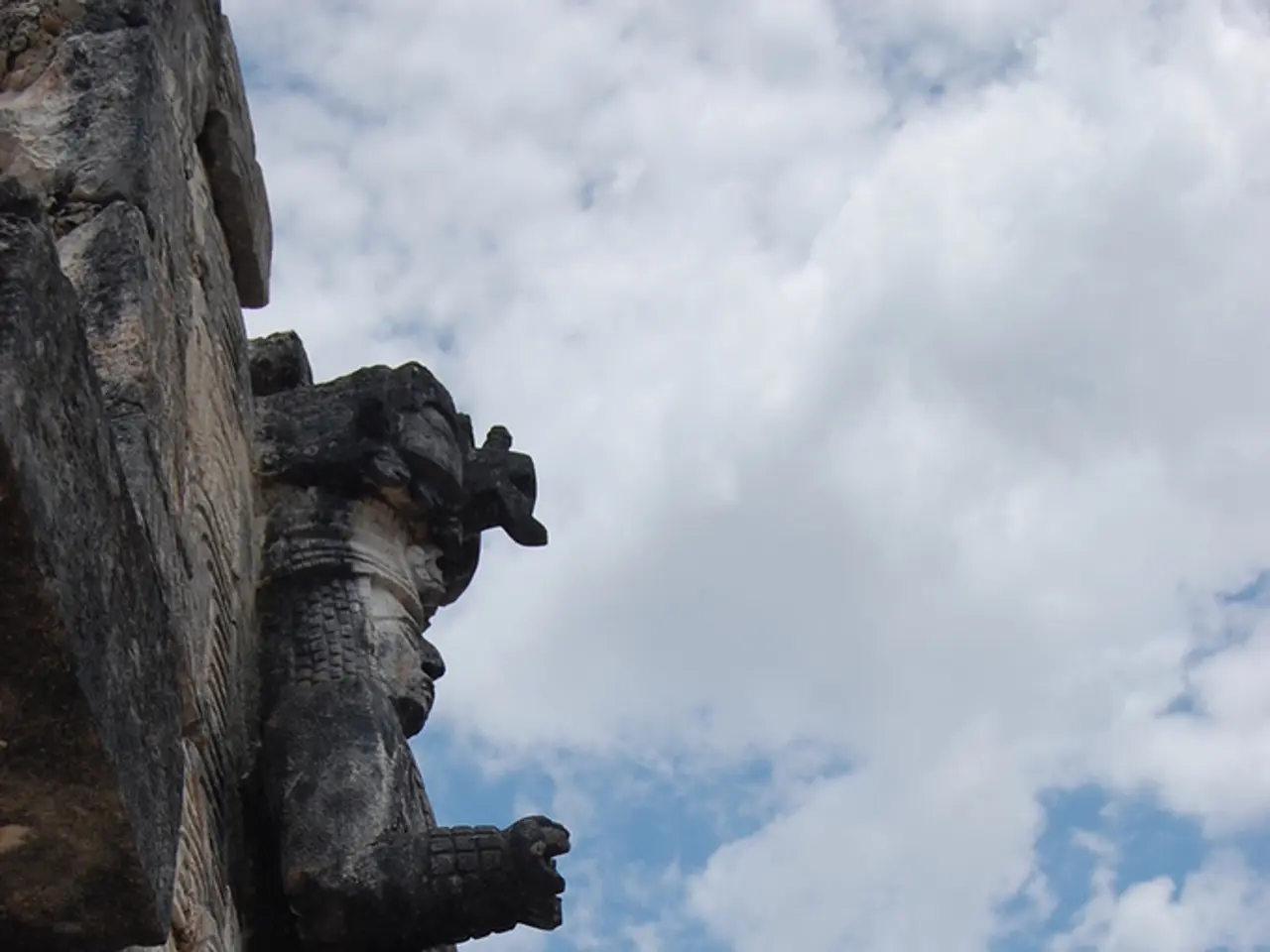Celestial Blacksmithing: Primeval Iron Shaped by Cosmic Fires
Discovered Bronze Age Arrowhead Links to Meteoritic Iron
In a fascinating discovery, archaeologists unearthed a Bronze Age arrowhead near Mörigen, Switzerland, last August. The arrowhead's composition remarkably matches that of IAB-type ataxite meteorites from Estonia's Kaalijarv fall.
This finding is part of a growing trend in the reexamination of Bronze Age and Early Iron Age artifacts. Analytical techniques such as portable XRF, scanning electron microscopy (SEM/EDS), and X-ray microtomography are being used to uncover more meteoritic iron objects.
Ancient artisans in the late 14th century BCE recognised meteoritic iron by its distinctive high nickel content. They worked it by hammering, without smelting, to shape luxury items like daggers. Unlike terrestrial iron, meteoritic iron was workable by direct cold or hot hammering, allowing artisans to shape it into thin blades or ornamentation without needing iron smelting technology.
One of the most famous examples of this is Tutankhamun’s dagger, whose high percentage of nickel has been scientifically confirmed, confirming its meteoritic origin. Artisans likely acquired meteoritic iron from meteorite fragments that fell to Earth, which they recognised through its unusual hardness, lustrous appearance, and metallic composition distinct from known ores or smelted metals.
The methods used to differentiate meteoritic from terrestrial iron likely relied on experiential knowledge of the metal’s properties. While ancient smithing techniques to fully smelt terrestrial iron only developed later, the recognition of meteoritic iron as rare and “celestial” probably came from its scarcity and symbolic connection to the heavens, prompting its association with divine or royal status.
In Hattusa, no surviving text explains precise forging techniques for meteoritic iron. However, in Mesopotamia, scribes inscribed AN.BAR on tribute lists to royal palaces and temples, pairing sky iron with luxury items. This practice was also observed in Ugarit (Syria) and the Shang dynasty in China by around 1400 BCE, where societies were producing axes or chisels from meteoritic iron.
In Egypt, the term "iron of the sky" was used to describe meteoritic iron in hieroglyphs of the early 19th Dynasty (c. 1295 BCE). Hittite cuneiform tablets refer to AN.BAR GE nepis ("black iron from heaven"), implying a ritual dimension to retrieving and working such metal.
In other parts of the world, societies also recognised and utilised meteoritic iron. In southern Poland, four Lusatian Culture ornaments—three bracelets and a pin—were made of ataxite-type meteoritic iron. Inuit communities in Greenland developed a tradition of collecting and cold-working fragments of the Cape York meteorite.
The blade of the dagger found in King Tutankhamun's tomb had a pale, silvery shine, unlike any bronze or copper artifact in the suites of funerary treasure. Modern portable X-ray fluorescence tests carried out in 2016 revealed that the dagger's metal contained approximately 10.8 percent nickel and 0.58 percent cobalt, confirming its meteoritic origin.
This discovery not only sheds light on the ancient world's use of meteoritic iron but also highlights the ingenuity and craftsmanship of the artisans who worked with this rare and unique material. The Cape York meteorite, for instance, provided a rare source of workable metal in an otherwise metal-poor environment. European explorers, including Captain William Scoresby, noted the remarkable craftsmanship with which Inuit smiths hammered meteorite pieces into tools. During the Fifth Thule Expedition (1921-24), ethnographer Knud Rasmussen recorded how Inuit families passed down knowledge of iron-rich sites.
In conclusion, the discovery of the Bronze Age arrowhead in Switzerland adds to the growing body of evidence that meteoritic iron was widely used across various societies in the late 14th century BCE. The unique properties of meteoritic iron, combined with its rarity and symbolic connection to the heavens, made it a valuable and sought-after material for luxury goods, reflecting the divine power and status of its owners.
- The use of meteoritic iron, as seen in the Bronze Age arrowhead discovery in Switzerland, suggests a wider trend in the reexamination of artifacts, including environmental-science and technology, in Bronze Age and Early Iron Age societies.
- The archaeological finding brings more attention to the various ways ancient societies, such as Mesopotamia, Ugarit, China, Egypt, southern Poland, and Greenland, recognised and utilised meteoritic iron.
- Scientific advancements in modern times, such as portable XRF, SEM/EDS, and X-ray microtomography, have enabled researchers to uncover more cosmic events through the analysis of artifacts that contain meteoritic iron.
- Meteoritic iron objects, like Tutankhamun's dagger, have distinctive properties, such as a high nickel content and unique metallic composition, which can be differentiated from terrestrial iron by analytical techniques and the ancient artisans' experiential knowledge.
- The recognition of meteoritic iron as rare and associated with the heavens led to its symbolic connection with divine or royal status, reflecting the societies' understanding and fascination with cosmic events and the science of space-and-astronomy.




